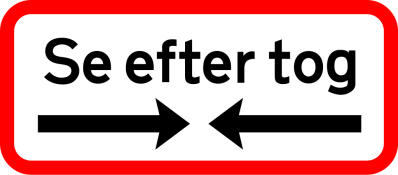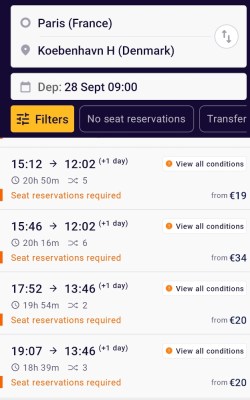This summer, I was pleasantly surprised when a friend of mine from Chicago turned up at one of the hacker camps I attended. A few days of hanging out in the sun ensued, doing cool hacker camp stuff, drinking unusual beverages, and generally having fun. It strikes me as a shame that this is such a rare occurrence, and since Hackaday is an American organisation and I am in a sense writing from its European outpost, I should do what I can to encourage my other friends from the USA and other parts of the world to visit. So here I’m trying to write a hacker’s guide to visiting Europe, in the hope that I’ll see more of you at future camps and other events.
It’s Intimidating. But Don’t Worry.

First of all, I know that it’s intimidating to travel to an unfamiliar place where the language and customs may be different. I’m from England, which sits on a small island in the North Atlantic, and believe it or not it’s intimidating for us to start traveling too. It involves leaving the safety of home and crossing the sea whether by flight, ferry, or tunnel, and that lies outside one’s regular comfort zone.
Americans live in a country that’s almost a continent in its own right, so you can satisfy your travel lust without leaving home. Thus of course the idea of landing in Germany or the Netherlands is intimidating. But transatlantic flights are surprisingly cheap in the scheme of international travel because of intense competition, so I’m here to reassure you that you can travel my continent ‘s hacker community without either feeling out of your depth, or breaking the bank.
What About The Language Barrier?
Let’s start with the language. I’m a British English speaker, je parle Francais, een beetje Nederlands, and ein bischien Deutsch. (Ed note: errors left intact for authenticity.) The fact is though, while it’s nice to try my halting Dutch to buy a portion of haring en uitjes, the truth is I rarely find myself completely lost in my travels through the hacker community on just my native language. It may annoy the French to call English a lingua franca, but if you’re an Anglophone you’ve lucked out in having the international glue language at your fingertips. It’s the default translation when traveling, in major cities you will usually find people who speak it when you need to. Meanwhile we’re lucky enough that there are few cities which don’t have some form of hackerspace, so you can usually find someone friendly with local knowledge if you need a bit of advice.
So It’s Not As Scary As You Think, But Why Come Here?

From here in Europe we look over the Atlantic at events like Def Con with some envy, but the fact is that Americans do things a little differently from us. Those events are expensive, while for us a summer hacker event is a community led affair in a field with camping thrown in. Some of the tickets are a few hundred dollars, but that’s it, no hotels, just camping in a field with five thousand other hackers.
Even better, the smaller events are cheaper, and often have much more charm as they aren’t so overwhelming. I can afford to do more than one, because they don’t cost an outrageous amount, and if I work out my timing I can even travel from one to the next without needing anywhere to stay over, instead helping with set-up and teardown. Add to that those hundreds of hackerspaces in cities only a relatively short distance apart, and there’s a lot to see.
Getting Around Needn’t Bankrupt You

One of the great holidays of the world remains the Great North American Road Trip. Grab a car with a couple of friends, and head out across the wide open spaces on the roads less traveled. Eat at Mom-n-Pop roadside diners in flyspeck towns, and enjoy what the continent has to offer under that endless sky. But while hire cars and gasoline may be cheap in the USA, long distance driving is tedious, so Americans prefer to fly.
Europe is different, hire cars are expensive, gasoline is eye-wateringly expensive, and while budget flights can be cheap, they really are a royal pain in the ass. Fortunately our continent is still cris-crossed by an extensive passenger rail network, and while individual tickets can be expensive there’s a very handy hack that makes them a great choice for a tourist. It’s called the eurail pass, originally designed for young people but now available for all ages, and it offers universal access for visitors to the whole continent’s rail network.
Taking a train from Paris to Copenhagen is simply a case of punching the journey into the app, and doing it with 180 mph high-speed trains instead of slower regional trains usually only takes a few Euros extra booking fee. If you’ve ever wondered how I write about events all over Europe for Hackaday I can reveal that there’s no diamond-encrusted expense account, instead I use the domestic European version of this pass. It’s that good.
Where To Stay

If you are coming over for a hacker camp, there’s your campsite and event all rolled into one, but outside the camps there are still some affordable options. Starting with camping, for us it’s not the backwoods facilities of a trailhead camping spot but in most cases a commercial camp site. For not a huge a mount of money you’ll get toilets and showers along with your pitch, and even a 230V CEE-form power hook-up if you’re prepared to pay extra.
I’ve written Hackaday articles in more than one camp site in my time. Then if you have a eurail pass it’s worth noting that Europe has a night train network. If it’s a conventional sit-up train you might not have the most comfortable night, but for the extra cost of a sleeper berth you can swallow up the journey in comfort and have the day to do more interesting stuff. Then as everywhere it’s easy to find a hotel, I tend to aim for non-tourist-destination train stops and find a two-star room for about 50 to 70 Euros when I need one. And after a few nights camping and night training, you will need one. Finally as you wander around our continent’s hackerspaces you may find the occasional offer of a sofa for the night, but remember that most European houses are tiny and the etiquette around staying over may be a little different. Only expect to stay for a while and use someone’s place as a base if they really know you.
Day To Day

It’s possible to exist in many European cities using small-denomination cash in whatever the local currency is, and shopping in ancient markets for exotic ingredients. It’s fun, even. But Europeans shop at the same shops and supermarkets as anyone else, and your Mastercard will work here too.
Look out for budget supermarkets, Aldi, Lidl, or Netto if you’re on a shoestring, and Primark if you’re in need of clothing. Meanwhile eating out can be expensive, and we don’t have a tradition of eating out for breakfast. We have McDonalds, Burger King, and KFC here just like anywhere else, but seek out the local fast food, it’s worth it.
European Hackerspaces
Wrapping it up, if you’re an American you may not be used to most hackerspaces only being a few tens of miles from each other. As a member of several European spaces it’s great to have international visitors drop by, so please, check out online when you go somewhere, find the space, and give them a shout. I have drunk Club-Mate and eaten a variety of delicacies while sitting on shabby sofas in the company of my peers continent-wide, and if you’re One of Us and looking to get to know a country there’s no better way.
So. The Hackaday Tourist Guide has spoken, are we going to see you at a European event next summer?
Header: NASA, public domain.















There was a very old episode of Top Gear where Clarkson in Merceder SLR raced May and Hamond all the way from UK to Norway. He drove all across UK, France, Germany, Holand, Denmark, Sweden and finally Norway and did all of that before EU was even a thing. Hammond and May took boat in a straight line from UK to Norway. Turns out driving a car in Europe is indeed faster than using pubic transport. In my ex-homeland we have a saying where “PKP” (our national rail operator) means “Pociąg Kiedyś Przyjedzie” (“Train will arrive someday”). Train lines are known for being a money sink for corrupt officials, are notoriously unreliable and late; plus there is a problem with people stealing from your baggage if you get tired and fall asleep.
EU was definitely a thing way before:
“The programme’s first series in 2002 was presented by Clarkson, Richard Hammond, and Jason Dawe…”
“The EU was established, along with its citizenship, when the Maastricht Treaty came into force in 1993…” and the Schengen treaty was active in 1995.
Between 1993 and late 2009, there was the European Community (EC).
It was a renamed European Economic Community (EEC), which dates back to 1957. After late 2009, the European Union (EU) was the lone succesor.
https://de.wikipedia.org/wiki/Europ%C3%A4ische_Gemeinschaft
In school, we heard the term European Community a lot.
It had been in use before it was official coined.
The difference was that European Community was being (mis)understood as a cultural commonality, which it wasn’t, strictly, speaking.
E(E)C and EU do center about economy and commerce rather than culture and a common European heritage.
The idealistic part is severly missing. As if money could buy you happiness and safety.
Speaking under correction, though. As usual.
well, i know what would happen if you fall asleep behind the steering wheel of a car…
Jeremy Clarkson didn’t stop on his red-eye drive. If being that tired is the price for being a bit faster, I’ll take the train.
EU trains travel is getting faster due to upgrading of railway tracks and by process improvements.
https://www.railtech.com/all/2023/12/14/amsterdam-berlin-train-is-30-minutes-faster-no-more-locomotive-change/
Also all trains have wifi and tables, so it’s possible be productive during the trip.
I love top gear but it is scripted, and a car show was not going to arrive at the conclusion that train travel is faster.
Travel times vary between locations, tain is 2h faster from Amsterdam to Paris, but Car is 15mins faster Ams to Berlin and 3h faster when going to Copenhagen.
Some trains have wifi and tables. Not nearly all.
In Germany, it is mostly the ICE (inter city express) and RE (regional express) that have wifi. RB (regional bahn) doesn’t usually have wifi.
Depends heavily on where, who and what: ICE/IC/EC — wifi. RB/RE: if old doublestack, no wifi, new doublestack or Hamsterbacke, wifi. Flirt, sometimes wifi. Replacement cars, neighbors wifi or none. If the line passes areas without cellphone coverage (tunnels), wifi, but no internet. It is common for train sets to go as RE in one direction and to return as RB (more stops) in the other direction, and the next one vice versa, to minimize waiting times at turnover. This has no effect on wifi. Some railway statins have their own wifi, sometimes you get wifi from the IC on the next track.
Disclaimer: things may be totally different 100 km away from here[tm].
Top gear is an entertainment show, there is a reason every possible ‘race’ they came up with was ‘close’.
To make it extra clear: It’s all fake of course.
I’ve done 1000+ mile non-stop drives across Europe fuelled by energy drinks and youthful enthusiasm and while they are entirely possible if you really have to, they do not see you arriving at your destination fresh and chirpy.
Recently we did a more sensible trip to the middle of Germany from the UK and it just about worked out equal in cost/time to drive/eurotunnel it than flying/public transport but mainly because a car ticket for Eurotunnel is the same price no matter how many people are in it.
Top Gear is about as real as WWF, it’s entertainment.
Have you travelled by PKP recently? You might be surprised – I found service much better and reliable than DB.
The last two DB ICE trains I’ve taken have been cancelled. I have found the DB staff to be very polite and helpful about getting my ignorant tourist self to my destination… eventually.
My hack for European train travel is to never book through a third-party, always through the national railway, e.g BNCF in Belgium, DB in Germany. For international trains I book with whichever country on the route offers me the cheapest ticket. Note that I am usually doing one long journey. If you are bouncing around a lot of different trains, a Eurail pass is probably a better option
Sounds great!
Now I need someone to finance it!
B^)
“look after train” (look out for trains)
The arrows on the sign, seems to indcate its for above a tunnel, or maby it means look right then left?
this sign is secially for double track railways, so trains can come from two directions at the same time, or worse, the other train passes at high speed just when the first one clears the crossing. this is the reason that in the netherlands level crossings are phased out and are always covered by drawbars ( is that the right word? slagboom in dutch) remember, on a lot of railways here a train passes every 8 minutes.
I’ve seen this sign at a Danish railway station where the platform was in the middle of two tracks. There was a pedestrian level crossing, and it was warning to watch out for trains.
Ha. for a lot of (non) native people from amsterdam, the Neterlands, they dont even venture out from the A10 ring road around amsterdam. “are you going all the way to Arnhem??” ( one hour drive by car or train…)
so your milage may vary.
Substitute London and the M25 and it’s the same.
As someone who’s travelled to the Netherlands a few times for work, I got the impression that everywhere was about an hour away by train.
And compared to the UK the trains are good, and cheap.
Aldi and Lidl exist on this side of the pond, too – and we have both Aldi Nord (Trader Joe’s) and Aldi Süd (branded simply as ‘Aldi’) over here as well.
I haven’t seen a Lidl here, but if I do, I want to check out the cheap tools/electronics mentioned in Hackaday comments.
I once bumped into someone in Aldi who commented that one advantage of buying tools and hardware there was that you inherently were buying something with German quality.
In my experience that is almost true, but there can be exceptions.
The concept also applies to Lidl.
The tools are surprisingly good. My hackerspace in Milton Keynes has a policy of first buying the Parkside tool, and if it wears out it proves it’s much in demand, so they buy the expensive one. It’s amazing how well some of those Parkside tools have lasted.
In my youth, my plan for buying tools was to buy a cheapie , and if one part breaks or wears out to replace it with a quality one.
I had a friend who took that to extremes. He’s a boatbuilder.
His trick is to use the tool hard until it burns out, which isn’t long because of the nature of his jobs – and then simply return it to the shop as faulty and get a replacement free or a refund.
I love Aldi but I’ve had some absolute turds from there too. Like the spirit level that wasn’t level. Every time I look at my lintel I am reminded of this terrible tool! Of course, I should have double-xhecked against another tool too :-)
Back on topic, a European hacker camp is one of my bucket list activities. As I’ve said for the last decade, “maybe next year”!
In the meantime, please keep writing about the camps so I can enjoy them vicariously :-)
After spending many summer months with family in Europe, I am happy to say that you have hit the experience “out of the ballpark” as we yanks say. For those travelling abroad from the U.S., I recommend contacting AAA and get a “Tip pack”. Trust me on this. It pays to have some Euros and Pounds when needed for an emergency. Inverters for motorized devices and don’t worry about your “Switching Power Supplies, as they can handle 110 – 240VAC. Happy travels and thanks again Jenny!
73 de KC8KVA
Language question: is this “Hitchhacker’s guide to Europe” or “Hackhiker guide to Europe”?
Now I’m getting a pain in all the diodes down my left hand side …
(Chuckle!)
úsek smrtelných nehod
As I saw on a sign driving into Czech Republic about 20yrs ago.
Didn’t speak much Czech, so given what it looked like I assumed “road pirates” were on the loose.
(google for the lols).
Haven’t had many problems traveling Europe. Pretty much everyone is interested in showing you they speak english, and pointing ALWAYS works. Worst case is using the split screen google translate on my phone. Just use the largest font.
1-2 kilos of coins of various sizes and amounts is probably my biggest issue, I much prefer paper money. Credit card mostly universally works. YMMV.
In some countries it is becoming impossible to pay in cash. It is Google/Apple pay or the highway.
With the fall of the wall, East Germany has expanded enormously :(
Yes. I noticed. But don’t despair. East Germans have invaded West Germany, too. We share your suffering. ;)
Oh well, a lot of things went down the drain in the past few years.
East Prussia nolonger is what it used to be.. sigh. :(
(Just kidding)
You can just pay with debit and credit cards. I don’t even have any form of payment on my cellphone and manage to get around in Europe just fine.
Especially Germany is a cash-happy country, with many venues outside of the bigger cities only accepting cash.
The UK and Scandinavia are the opposites, you can get around with card virtually everywhere.
“Especially Germany is a cash-happy country, with many venues outside of the bigger cities only accepting cash.”
True. “Nur Bares ist Wahres” ( -> “only cash is something truely [worthy]” ) :)
But it has been changed for better since the 2020s. Corona pandemic has changed people’s minds a bit.
That being said, traditional debit cards are better being supported than credit cards.
Places like trains stations, airports or petrol stations should support credit cards, though.
Pub owners and cafès might be hit and miss, though. So it’s better to ask first.
In a restaurant, being willed to order a bigger meal might make them consider accepting a credit card, too.
Ordering just a glass of Coca Cola, by contrast, not so much.
If everything fails, there are still ATMs around, usually.
Though I would check their location right from the start.
Google Maps usually lists them.
Foreign debit cards by other banks are being accepted, normally, but cost an extra.
That’s because each German bank operates their own ATM in a given place.
ATMs located at airports and train stations should be more international, I assume.
Speaking under correction.
Same as IIVQ – I don’t have any payment on my phone at all, debit/credit cards work almost everywhere in Europe barring the very rare shop or street trader who wants cash.
What’s great are the public transport services where you just tap your card in/out at the station or on the tram – no tickets, no buying the wrong thing, it’s how public transport should be.
Which countries are these? I’ve travelled all over Europe (East and West) with no payment method on my phone whatsoever.
If you travel in Poland, Slovakia, Hungary and that region and don’t have internet even though your phone says 4G? Try putting it in 2G mode. Internet will be slow and reception spotty, but at least it works for booking rooms, googling for info and such. It can be hard finding information in English, and if you can’t use an off-line translation app, it can be difficult as few speak English. And use Airplane mode or at least turn of mobile data if you’re in Bosnia-Herzegovina. The costs I got this summer was 10€ per day for 307MB, and €2.5 per minute call, €0.5 per SMS. Croatia is so much nicer to travel in and basically like any west European country in tech level, infrastructure, payments and such, and way better with information in other languages.
+1
What’s also good to know: SMS is the most rugged mode of them all.
It still works in shielded places like hospitals, were normal data and voice communications fails due to bad connection.
Interesting. At my parent’s house, I have full (4 bars) of 5G reception, yet I can hardly watch online radio, let alone a video. However when I switch to 4G which is 3 or sometimes 2 bars, everything works smoothly.
In the Netherlands, some providers have switched off 3G but left 2G on, while others did the inverse.
That new EU thing doesn’t apply yet? They were going to fix that roaming-scam nonsense.
They did, a long time ago, but BiH is not an EU Union member and that’s why using your phone is expencive there.
My dear Ms List,
What would ever make you think that we ‘Americans’ speak ‘English’ in these United States?
I have yet to meet an EU resident that did not speak, fluently mind you, at least two languages. My language issues when traveling were always solved via polite questions offered to the locals. Conversely, I have yet to meet an American that (fluently) spoke English. When I was in Munich, I was not able to converse with a driver. And I shit you not, we found that we both had a fundamental grasp of a non-language, wait for it, Klingon. As my calc professor once said, “Whatever works”.
While traveling in Italy last month:
My wife and I stopped at a tourist attraction, and went to have a cup of coffee at a little shop on the premises.
It turned out that the Italian guy running the coffee shop had lived in Germany for many years.
As an American, I speak English and German. As a German, my wife speaks German, English and tourist Italian. The coffee shop guy spoke Italian and German.
The three of us chilled out with a cup of coffee and and chattered away in German, getting the Italian guy’s views of the local attractions.
I walked by a couple of senior Texas tourists in Nürnberg this summer, who had trouble finding their destination, since they hadn’t bothered to find out the German name of what they were looking for, and the two taxi drivers spoke very limited English (both were clearly non-German and I think Romanian immigrants). And the tourists apparently couldn’t google for the info. So I helped, and they assumed I was Canadian. I’m Swedish.
Two decades ago I were in Ireland, and there were two American couples on the same small tourist bus. It took a while before I realised, that the reason they wanted me to repeat what the different Guides just said, was that my English were easier to understand for them. The English speaking guides were easy to understand for me, just more or less Irish accent, but several similar incidents during the past two decades have made me come to the conclusion that quite a lot of Americans live lives where they don’t learn to understand English spoken with different accents, while more or less accented English is the norm in Europe. It no longer surprise me.
“they assumed I was Canadian. I’m Swedish.”
Close enough!
B^)
NSA hackers visit Europe.
https://www.prosefights2.org/irp2014/p051315/swissradio.mp3
RIGGING THE GAME Spy sting: Few at the Swiss factory …
Baltimore Sun
https://www.baltimoresun.com › 1995/12/10 › rigging-th…
Dec 10, 1995 — For years, NSA secretly rigged Crypto AG machines so that US eavesdroppers could easily break their codes, according to former company employees.
Or equally bad: H***is voters.
You meant to add I’m sure.
Errrm, no.
Why is it intimidating to look for incoming trains before crossing the rails?
“…most European houses are tiny”
Am I blind to this because I’ve only briefly visited the US? Do they have giant houses over there, like something from Jack and the Beanstalk? Are 50% percent of “European” houses “tiny”?
It’s because Europeans measure their property in hectares, and Americans measure their property in acres. Hectares are smaller than acres.
B^)
Now that the Automn leaves are piling up in my yard (garden -Jenny) I wish my property was smaller!
May your journey through Europe’s winding paths, both digital and worldly, be thoughtful and evocative!